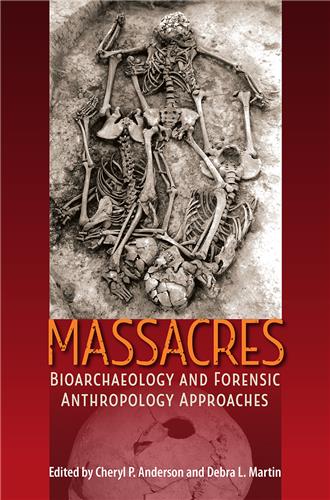History and Approaches to Heritage Studies explores the historical development of cultural heritage theory and practice, as well as current issues in the field. It brings together archaeologists who are deeply engaged with a range of stakeholders in heritage management and training.
Browse by Subject: Archaeology
Please note that while you may order forthcoming books at any time, they will not be available for shipment until shortly before publication date
Exploring museums and cultural centers in New England that hold important meanings for Native American communities today, this illuminating book offers a much-needed critique of the collaborative work being done to preserve and promote the cultural heritage of the region.
This volume integrates data from researchers in bioarchaeology and forensic anthropology to explain when and why group-targeted violence occurs. Massacres have plagued both ancient and modern societies, and by analyzing skeletal remains from these events within their broader cultural and historical contexts this volume opens up important new understandings of the underlying social processes that continue to lead to these tragedies.
Drawing on material evidence from daily life in a coal-mining town, this book offers an up-close view of the political economy of the United States over the course of the twentieth century. This community’s story illustrates the great ironies of this era, showing how modernist progress and plenty were inseparable from the destructive cycles of capitalism.
This is the first volume to bring together archaeology, anthropology, and art history in the analysis of pre-Columbian pottery. While previous research on ceramic artifacts has been divided by these three disciplines, this volume shows how integrating these approaches provides new understandings of many different aspects of Ancient American societies.
Wrecked aircraft and abandoned airfields, old highway billboards and derelict boats, movie props, deserted mining operations. In this book, archaeologist P.J. Capelotti explores places and things that people don’t typically think of as archaeological sites and artifacts, introducing readers to the most extreme fieldwork taking place today.
This volume offers a novel interdisciplinary view of the migration, mobility, ethnicity, and social identities of pre-Columbian Mesoamerican peoples. In studies that combine bioarchaeology, ethnohistory, isotope data, and dental morphology, contributors demonstrate the challenges and rewards of such integrative work when applied to large regional questions of population history.
Researchers who study ancient human diets tend to focus on meat eating, since the practice of butchery is very apparent in the archaeological record. In this volume, Julie Lesnik brings a different food source into view, tracing evidence that humans and their hominin ancestors also consumed insects throughout the entire course of human evolution.
This exciting book brings the often-overlooked southern Maya region of Guatemala into the spotlight by closely examining the “lost city” of Chocolá. Jonathan Kaplan and Federico Paredes Umaña prove that Chocolá was a major Maya polity and reveal exactly why it was so influential.
Emphasizing a life course approach and developmental perspective, this volume’s interdisciplinary nature marks a paradigm shift in the way children of the past are studied. It points the way forward to a better understanding of childhood as a dynamic lived experience both physically and socially.











